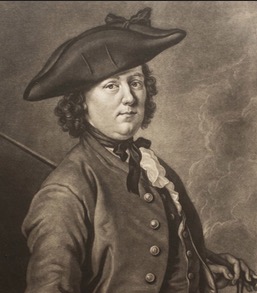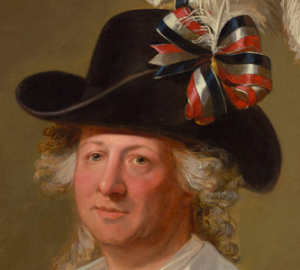A History of Gender Variance
As most transgender people know there is nothing new in being transgender. As a group of people we are always quick to point out that gender variance in one form or the other has been around since the beginning of time. However if someone was to push for an example of this, could you give one? Well, I’m a bit of a history buff and have compiled a list of events that prove we have indeed been around since the beginning of time.
13th Century, Damascus: The Islamic scholar and Sunni legal authority Imam An-Nawawi (1234-78 BCE) writes: “A mukhannath (Arabic- effeminate ones, men who resemble women”: singular mukhannath/Mukhannathun being plural) is one who carries in his movements, appearance, and language the characteristics of a woman. There are two types; the first in whom these characteristics are innate, he did not put them on by himself, and therein is no guilt, no blame and no shame. As long as he does not perform any illicit act or exploit it for money. The second type acts like a woman out of immoral purposes and his is the sinner and blameworthy”
(*Ref:EK, The Effeminates of Early Medina, J. Orental Soc 111(4): 671-693,1991)
7th Century BCE: the Greek god Aphroditus, Who later came to be called Hermaphroditus. Hermaphroditus was represented as a female figure with male genitalia. Terracotta figurines have been fond of the Hermaphroditus lifting her dress to reveal male sexual organs. These figurines were a popular way of bringing good luck to and warding off evil spirits to their owners.
3rd century, 264 BCE: During Rome’s wars against Carthage, the Cult of Cybele made a dramatic entrance into Rome. The Galli were priests in the Cult of Cybele. They may have been devoted specifically to the consort Attis (mythical consort of the Great Mother of the Gods), who had castrated himself in a fit of divine frenzy. On initiation to the cult the Galli castrated themselves and dressed entirely in women’s clothing. In 2002, archaeologists in Roman Britain discovered the remains of a male skeleton with female ornaments and Jewelry.The Cybelene priests were known to wear jet black jewelry, brightly colored female robes, and had female hairstyles beneath turbans and tiaras.
218 BCE: Elagabalus was the Roman Emperor from 218-222. Elagabalus is said to have dressed and made himself up as a female. It is said that he offered riches to any physician who could provide him with the genitalia of a woman. He was assassinated at the age of nineteen.
1513, Panama: Spanish conquistador Vasco Nunez de Balboa organizes the massacre of Indigenous trans people in the village of Quarequa. The King’s brother and a number of other courtiers were dressed as women. Vasco ordered that forty indigenous trans people be torn apart by dogs.
1654 Sweden: Queen Christina,’Walked like a man, sat and rode like a man, and could eat and swear like the roughest soldiers.’ She sometimes identifies herself as Count Dohna after her abdication. She has been claimed variously as lesbian, transgender, or possibly intersex by historians in an attempt to understand her.
1719 London; One Katherine Jones is acquitted of bigamy at the Old Bailey, after testifying that her second, “allegedly unlawful husband, was no man, therefore could not be a husband.” She said that her former spouse was a hermaphrodite.That he had been shown as such at Southwark fair, Smithfield, and several other places. She called several witnesses to prove the facts of her case. One witness claimed to have known “its” mother and “it” had been brought up in girl apparel, and to handle a needle until he turned to a man at 12 years old and went to sea.
1747 London; Hannah Snell (1723-92) enlists as a marine under the name, James Gray. He was seriously wounded at the battle of Devicotta, Hindustan, in 1749.Snell is really the first transgender celebrity. In 1750 London readers could learn of his adventures in a 42 page pot boiler, (priced at a shilling) called;The Surprising Life and Adventures of Hannah Snell. This was soon followed by 60 stage appearances, songs, portrait sittings, and the opening of a pub called, The Female Warrior.
1783 Gujarat India: a temple sacred to the Hindu goddess, Bahuchara Mata, is built and served by self-castrated priests who dress and live their lives as women.
1728-1810: Paris and London: The Chevalier d’Eon de Beaumont, who later styles herself Charlotte Genevieve Louise Auguste Andree Temothee d’Eon Beaumont, is a French aristocrat, diplomat, soldier and sometimes spy. d’Eon lives her first 49 years as a man and the rest of 33 years as a woman. d’Eon negotiated for 14 months with King Louis the XVI in order to have the court grant the Chevalier d’Eon recognition as a woman. The Beaumont Society, the first open access transgender support group in the UK is named after her. The Beaumont Society was founded in 1966
1862 Berlin: Karl Heinrich Ulrichs, (1825-95). Ulrichs is a lawyer, theologian, and pioneer of the modern gay rights movement. He describes his own homosexuality as: anima muliebris virili corpore inclusa, a female psyche confined in a male body. Ulrichs says of himself: “I may have a beard, and manly limbs, yet confined by these, I am and remain a woman.” Karl Ulrichs fusion of gay and gender identities dominates discussion of transsexualism for almost a century. It remains a widespread belief that trans women are gay men dressed in female clothes.
1865 London and Corfu: Dr. James Barry, a reforming military surgeon joins the British army in 1813, He is only discovered to have female anatomy after his death in 1865. Barry was possibly born as, Margaret Ann Bulkey. His tombstone in Kensal Rise Cemetery recalls him only as Dr. James Barry, Inspector General of Hospitals.
1865 United States’: Mary Edwards Walker. (1832-1919) Walker was a Union army surgeon of the American Civil War, unknowingly becomes the first woman to receive the United States’ highest military decoration, the Medal of Honor. There are surviving photographs of the hero wearing male clothing. Walker is later said to have been arrested for impersonating a man.
There is more to our history, but I think this is enough for now. We will explore more on the history of gender variance next month. Until then, be proud of who you are.
Category: History









